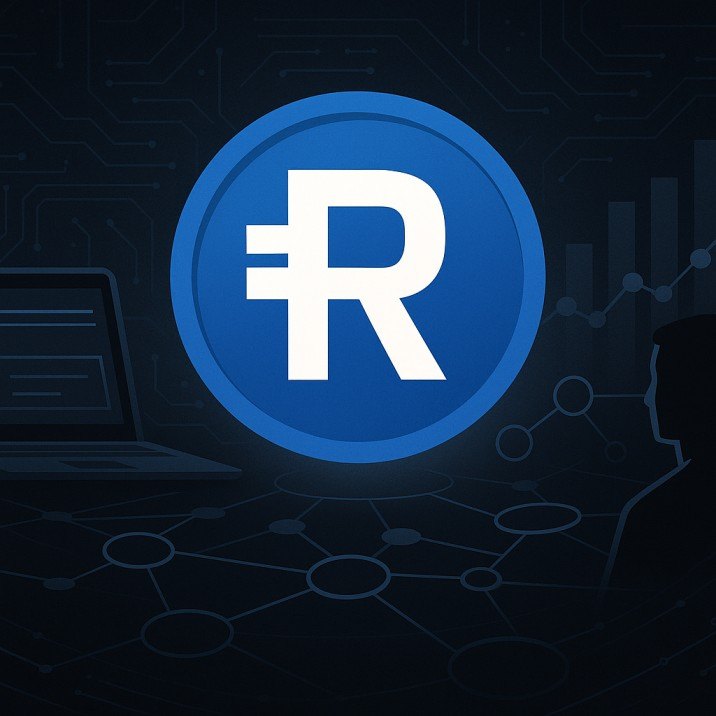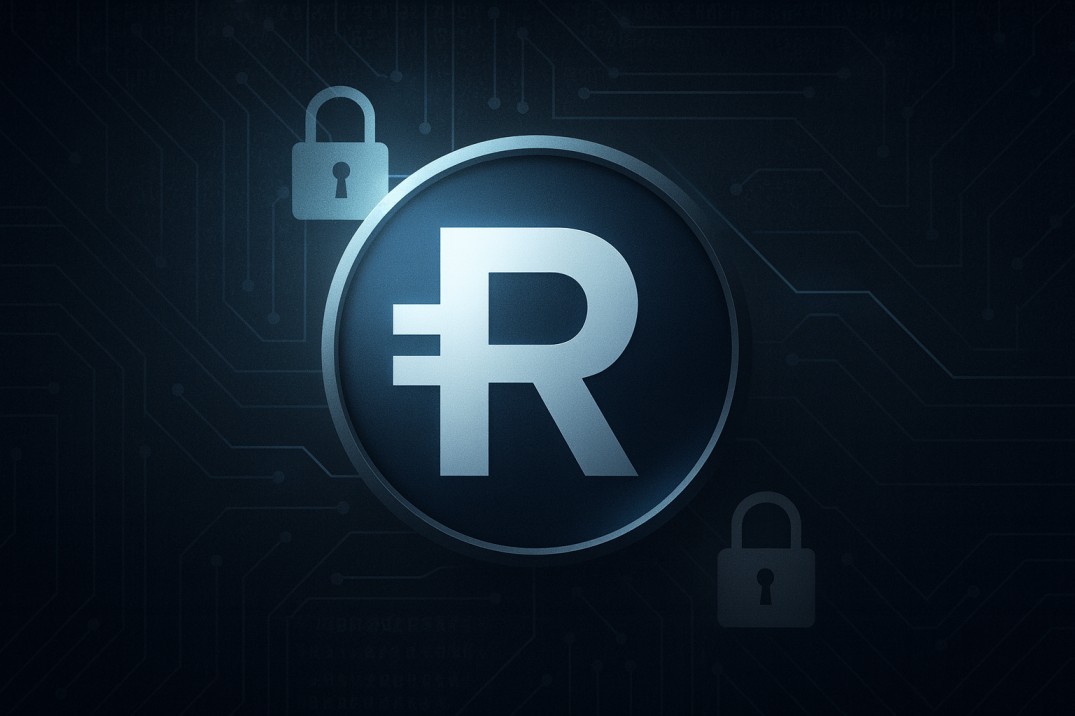TL;DR
- Reserve Protocol: Enables creation of Decentralized Token Folios (DTFs) - diversified baskets of assets backing stablecoins or investment tokens.
- RSR Token: ERC-20 governance and utility token launched in 2019 via Huobi Prime.
- Use Cases: Stablecoins, decentralized ETFs, global payments, and risk management.
- Unique Features: Basket-backed stablecoins, permissionless launches, sustainable staking, and roadmap for real-world collateral.
- Security: Built on Ethereum, leveraging its robust network and smart contract governance.
- Challenges: Adoption, competition, collateral risks, regulation, and liquidity.
- Future Outlook: Potential to evolve into a global, inflation-resistant decentralized monetary system.
In today's digital economy, the role of money is being redefined. Traditional currencies are vulnerable to inflation, monetary mismanagement, and centralized control. Stablecoins emerged to solve some of these problems, offering crypto users a reliable way to transact without volatility. But most stablecoins still rely on centralized custodians holding U.S. dollars or other fiat reserves.
The Reserve protocol was designed to address this limitation by creating diversified, on-chain, permissionless portfolios of assets that can back stable digital currencies. Instead of depending on a single collateral type, Reserve enables anyone to launch and govern Decentralized Token Folios (DTFs) - baskets of assets managed transparently through smart contracts. At the heart of this system lies Reserve Rights (RSR), the governance and utility token that empowers the community to shape Reserve's future. RSR holders play a critical role: they can vote on governance changes and stake tokens to backstop collateral, earning rewards in return.
This article explores Reserve Rights (RSR) in depth - from its origins and design to its tokenomics, governance model, challenges, and the future of Reserve's vision for a decentralized, inflation-resistant global currency system.
What is Reserve?
Reserve is a protocol built to support decentralized, diversified, and transparent stable currencies. Its core product is the ability to launch Decentralized Token Folios (DTFs) - indexes of digital assets fully collateralized on-chain.
According to the Reserve documentation:
In practice, this means that instead of stablecoins relying on a custodian to hold fiat, Reserve's assets are stored and managed by smart contracts. The system is permissionless, meaning anyone can create a DTF with their chosen collateral basket, governance rules, and revenue structure.
Why DTFs Matter
- Stability: They can be designed as stablecoins pegged to a currency or basket of assets.
- Diversification: They can function like decentralized ETFs, spreading risk across multiple assets.
- Transparency: Collateral and rules are visible and verifiable on-chain.
- Resilience: By including diverse collateral - cryptocurrencies, bonds, commodities, or even tokenized real estate - DTFs aim to resist inflation and systemic risks.
Reserve's long-term goal is to build a new foundation for money, enabling currencies backed not by a single entity or asset but by diversified, decentralized portfolios.
The Origins of Reserve and RSR

Reserve was co-founded in 2019 by Nevin Freeman and Matt Elder.
- Nevin Freeman, an entrepreneur, has described his mission as "solving the coordination problems that are stopping humanity from achieving its potential."
- Matt Elder, an engineer formerly at Google and Quixey, oversaw the architecture of the Reserve protocol's technical design.
The project launched with a vision to create an open, massively scalable stablecoin platform. Over time, it grew into a community-driven ecosystem with contributors across engineering, legal, compliance, and governance fields. Reserve Rights (RSR), the ecosystem's governance token, was introduced through an Initial Exchange Offering (IEO) on Huobi Prime in May 2019. Since then, RSR has become central to Reserve's staking, governance, and risk-management framework.
What is Reserve Rights (RSR)?
Reserve Rights (RSR) is an ERC-20 token that serves two primary purposes within the Reserve ecosystem:
- Governance: RSR holders propose and vote on governance decisions for Reserve stablecoins (RTokens). This includes setting collateral rules, adjusting revenue distribution, or upgrading system parameters.
- Overcollateralization: RSR acts as a safety net. In case of collateral defaults within an RToken, staked RSR is liquidated to cover losses, ensuring that RToken holders remain whole.
In return, RSR stakers earn a portion of the revenue generated by the RTokens they support. This dual role gives RSR holders both responsibility (as backstoppers of risk) and incentives (through revenue sharing and governance rights).
How Does RSR Work?

The functioning of RSR revolves around three core mechanisms:
1. Governance Power
RSR is the governance token of the Reserve protocol. Holders can:
- Propose new collateral types.
- Vote on governance settings (such as fee distribution or risk parameters).
- Participate in the design of new DTFs.
This ensures that decision-making is decentralized and community-driven.
2. Staking and Overcollateralization
RSR holders can stake their tokens on any RToken (Reserve stablecoin) they believe in. By staking, they provide "first-loss capital." If a collateral token within that RToken defaults, the staked RSR is used to make holders whole. In exchange, stakers earn a portion of the revenue generated by the RToken - usually from transaction fees or yield from collateral assets.
3. Revenue for Stakers
The more successful and widely used an RToken becomes, the higher the revenue shared with stakers. This creates a natural alignment: RSR holders benefit from supporting RTokens that attract adoption and liquidity.
Tokenomics of RSR
- Token Standard: ERC-20 (Ethereum).
- Launched: May 2019, via Huobi Prime IEO.
- Supply: Initially set at 100 billion tokens. (Note: circulating supply fluctuates as tokens are staked or unlocked.)
- Utility: Governance, staking, and backstop collateral.
- Rewards: RSR stakers receive revenue shares from RTokens they support.
Unlike many staking systems that resemble Ponzi-like mechanisms (where new participants fund earlier ones), RSR's staking is designed for long-term sustainability. Late participants don't subsidize early stakers, and rewards come directly from RToken revenues.
Use Cases of Reserve and RSR
Reserve's design allows for multiple practical applications:
- Stablecoins: RTokens can serve as inflation-resistant stable currencies, backed by diverse assets instead of just fiat.
- Decentralized Investment Vehicles: DTFs can act like on-chain ETFs, giving investors exposure to multiple assets in a single token.
- Risk Management: RSR provides the safety buffer, ensuring RTokens remain reliable.
- Global Payments: Reserve envisions RTokens being used globally for remittances, savings, and everyday transactions.
- Open Governance: Communities can launch RTokens tailored to specific needs - regional currencies, thematic portfolios, or sector-based baskets.
What Makes Reserve Rights Unique?
Reserve and RSR stand apart for several reasons:
- Basket-Backed Stablecoins: Unlike USDT or USDC, which rely on fiat reserves, Reserve stablecoins are backed by diversified crypto (and eventually real-world) assets.
- Permissionless Launching: Anyone can create an RToken with custom governance and collateral.
- Sustainable Staking: RSR staking is not short-term yield farming. It's designed for durability, aligning incentives over the long run.
- Future-Ready Collateral: While early RTokens rely on crypto assets, the roadmap includes adding tokenized stocks, bonds, commodities, and even real estate.
- Community-Driven Evolution: Governance ensures flexibility and adaptability as the ecosystem grows.
How is the Network Secured?
Reserve Rights (RSR) operates as an ERC-20 token on Ethereum, inheriting Ethereum's security model. At present, this means RSR transactions are secured by Ethereum's proof-of-work (PoW) mechanism (later upgraded to proof-of-stake (PoS) after the Merge).
Security comes from:
- Ethereum's robust network of validators.
- Smart contracts managing collateral and staking transparently.
- Decentralized governance limiting single-point control.
Challenges and Risks
Despite its innovative model, Reserve and RSR face several challenges:
1. Adoption Hurdles
For RTokens to become widely used, they must gain trust, liquidity, and real-world utility. Competing against established stablecoins like USDT or USDC is difficult.
2. Collateral Risks
While diversification reduces risk, it doesn't eliminate it. If multiple collateral assets fail or suffer extreme volatility, RTokens could face stress tests.
3. Regulatory Scrutiny
Stablecoins are a major focus for regulators worldwide. Reserve's decentralized model may offer resilience, but navigating global compliance remains a challenge.
4. Competition
Projects like MakerDAO's DAI or Frax also pursue decentralized stablecoins. Reserve must differentiate itself with transparency, scalability, and diverse collateral baskets.
5. Liquidity and Scaling
The value of RSR staking depends on RToken adoption. If usage remains small, staking yields may not attract enough participation.
Future Outlook
The vision for Reserve is bold: creating a decentralized, inflation-resistant monetary system backed by diversified assets. If successful, RTokens could serve not just as stablecoins but as a new foundation for global money.
Potential future developments include:
- Adding real-world assets like tokenized bonds, commodities, and real estate.
- Growing the number of RTokens to support regional or thematic portfolios.
- Expanding governance participation to make Reserve one of the most community-driven stablecoin ecosystems.
- Building integrations with wallets, exchanges, and payment apps for everyday use.
RSR's role as a governance and backstop token ensures it remains central to Reserve's expansion.
Final Thoughts
Reserve and its governance token RSR represent a significant step forward in decentralized finance. By creating diversified, transparent, and permissionless asset baskets, Reserve challenges the traditional model of fiat-backed stablecoins. RSR holders are not just passive participants - they are the governors, risk-managers, and beneficiaries of the system. With its sustainable staking model, strong founding team, and ambitious roadmap, Reserve aims to redefine how stable currencies function in the crypto world and beyond.
However, challenges remain. Adoption, regulation, and competition will determine whether Reserve's bold vision becomes reality. Still, its unique design and mission make it one of the most intriguing projects in DeFi.











